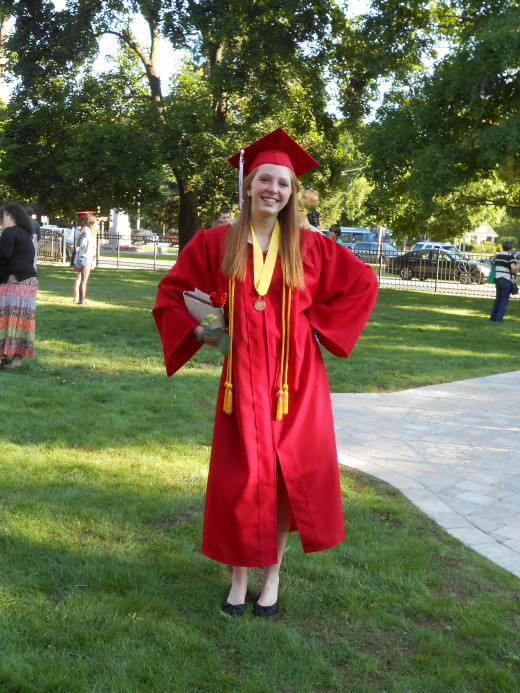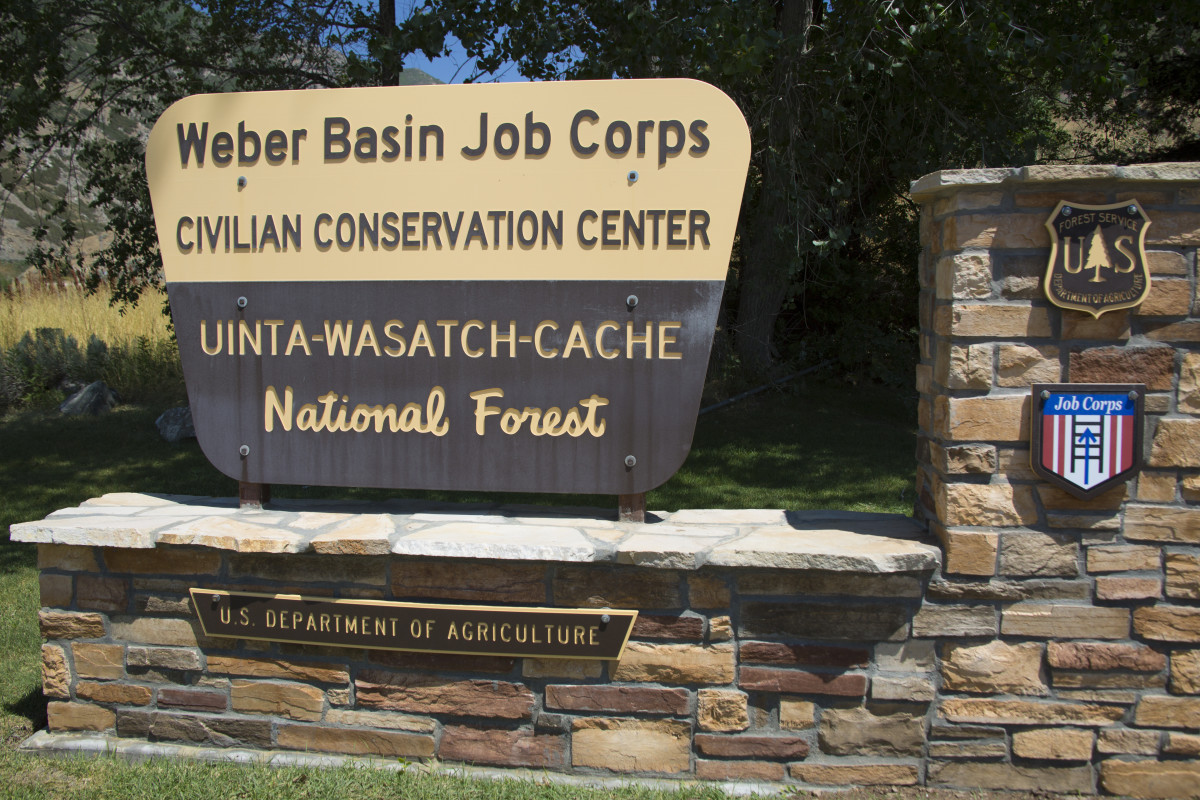Life After High School: The 4 Choices

For teenaged high school students, the future is wide open. Sometimes so wide open that students are frozen in their tracks regarding deciding what they want to do after they graduate.
It is better to look for a work opportunity which will be a career, instead of just a job. A job is usually something that one goes to every day to make money, but often has no chance of advancement. A career is based on a person's interests and goals.While in high school, it's important to visit the Career Center and take as many interest inventories as possible to find out what a person's interests are. Then they should ask to take some that are skill related so they can combine the two to see what career(s) they would be most suited for. Sometimes people think they want to enter a certain field, but don't understand the realities of that field till it's too late.
Take the person who wants to help people and decide to become a certified nursing assistant, only to find out they aren't comfortable giving the elderly sponge baths. Or the person that thinks they want to do landscaping, only to discover they can't stand to be out in the heat of the summer.
A great way to find out what future work a person is best suited for is to ask a teacher or guidance counselor about job shadowing someone for the day in a field the student thinks they are interested. Spending a day watching someone do a job may be just the ticket to let the young person know that's the career/ job for them, or that they definitely don't want to do that, and they have time to look for something else.
There seem to be so many options available to youth today, but as I said, there are only four basic choices: college, vocational training, military or work. I will break down the four choices a bit more in the following article.
College
College is usually a 2 or 4-year assortment of academic classes which will prepare a student for an associate's degree ( 2 years) or a Bachelor's Degree ( 4 years). It is also possible to attend a college for approximately one year and obtain a certificate. But the bottom line is, these classes are all academic. Some classes are mandatory, such as English Composition, Science, History, Psychology, Art History or Music History, and electives such as Art, Photography, etc. Colleges can be small ( under 5,000 students) or larger ( up to 20,000 students).
Community colleges are 2-year colleges that offer Associate's degrees in 2 years in a variety of subjects, and also Liberal Arts. If a student plans to go to a 2 year college to save money, and then transfer to a 4 year college after that, he will want to major in Liberal Arts to get all the core requirements under his/her belt, so that when they are ready to transfer and get his bachelor's degree, he will have saved a lot of money on tuition, and go to the 4 year college for his last 2 years.
Upon graduating from the 4-year school, the diploma will say nothing about the 2-year school but will say the student graduated from the 4-year school with a Bachelor's degree. Financially, it makes a lot of sense to start local in a community college, but most do not have dorms so a student would most likely need to go to one locally or rent an apartment in a town where the college is located. Financially, the community college is less expensive.
As an example, in Connecticut, the local community college in my town costs $3,700 in tuition per year to attend (2013 fees). The best 4-year state college costs $8,254 for tuition, and if you add room and board to that, it costs $21,720. You can see that a lot of money can be saved by choosing the local community college.
For a student that wants to get away from home and spread their wings, living on a college campus, a 4-year school is a better option but more expensive. And that's just a state school. If a private school is chosen instead, the cost can be astronomical. Trinity College in Hartford has an annual tuition cost of $42,420, and that doesn't include room and board. Add another $10,960 and the cost of one year only at this private school costs $53,380. Wow, that's a very large investment compared to $3,700.
Financial aid may be available to students in the form of merit aid, based on good grades, or financial aid through the federal government or the school, depending on the financial circumstances of the family. To qualify for merit aid, a student needs to search the financial aid pages on the college website to see if there is a deadline to apply for certain merit aid scholarships, or if they are considered for it automatically once they apply. For government aid, all college students should fill out a FAFSA form online. FAFSA stands for Free Application For Federal Student Aid. This can be filed after January first of the student's senior year in high school and should be filed no later than February 15th to be on the safe side.
Some individual colleges take the FAFSA later in the Spring, but keeping the February 1st target date in mind will be the safest idea. To fill out a FAFSA form, the 1040 tax forms of the student and the parent will need to be available. If a family hasn't filed their taxes for the previous year, they can use the tax information on 1040 for the year before that, and then just update them when they do their taxes by April 15th.
Vocational School
Vocational School is a great alternative to college for the young person who wants to learn hands-on training instead of academic classes. College is not for everyone and for the student who just wants to learn a trade this is a much better option. Vocational trades include Electrician, Plumber, Auto Mechanic, Auto Body Technician, Carpenter, Brick Layer, Certified Nursing Assistant, Massage Therapist, Hairdresser, Dog Groomer, Veterinary Assistant, Culinary Arts worker, HVAC Technician, etc. The training takes less time, and the cost is less as well. Many programs take 9 - 15 months. And students often have internships as part of their training and are sometimes hired by the training company. Most do not have dorms, but there are a few that do. ( Job Corps falls into this vocational training category ...see my previous hub on Job Corps) The earning potential is huge in many of these fields. And training starts four times per year, instead of just September or January.
Some states also offer apprenticeship programs where a recent graduate can get hands-on training as an apprentice, make less money than a licensed apprentice, but get paid while they are learning the trade. A log must be kept to keep track the number of the hours of training the apprentice is putting in, and this has to be shown to the state for the apprentice to take a test at the end of the training and get licensed. There is usually a course requirement for an apprenticeship training program, and the worker must go to a vocational school approximately two nights per week to obtain educational training to go along with the trade skills they learn during the day.
The catch with the apprenticeship training is that it is usually up to the would-be apprentice to find their own company to take them on and agree to follow the state's apprenticeship training rules and logs. The advantage to an apprenticeship is that the worker is getting paid the whole time they are learning their trade. The advantage to the company providing the training is they pay the apprentice less than if that person worked for them and had a license in that field already. If the company likes the apprentice, they will often hire them on at the end of the training when the license is issued, and at that point, the apprentice becomes a full-fledged employee and gets the full pay of a licensed worker.
The Military
The Military offers many careers and pays for most or at least part of a college degree for those who want to further their academic education. The branches of the military are Air Force, Air National Guard ( part-time service), Army, Army National Guard ( part-time service), Coast Guard, Marines, Navy. For the most part, recruiters are allowed to visit high schools and speak with students. Each school district can make their own rules in terms of visits, and some won't let recruiters onto the high school property, while others are fine with them dropping by for informational visits. The best way to gain information about a particular military branch is to speak with a recruiter for that branch. But before making a decision either way, if a student knows someone who is already in the service, it would be a good idea to speak with them about what their experience in the military is like before totally committing.
Before a person can enter the military, they must pass the ASVAB. The ASVAB stands for Armed Services Vocational Aptitude Battery. This is a series of tests on various subjects which are broken down into a certain amount of minutes for each category. The whole test takes 3 hours to complete. The subjects on the test are:
*Arithmetic Reasoning
*Assembling Objects
*Auto Shop
*Electronics Information
*General Science
*Math Knowledge
*Mechanical Comprehension
*Paragraph Comprehension
*Word Knowledge
After the test is taken, it is sent off to be scored. The composite score is called the Armed Forces Qualification Test score and will average out all of the scores. Currently, in order to join a military branch, the AFQT is as follows for each branch:
Air Force: 50
Air National Guard: 50
Army: 31
Army National Guard: 31
Coast Guard: 65
Marines: 31
Navy: 36
The higher the AFQT score over the minimum score, the more career opportunities will be available to the new recruit. The best source for studying for the ASVAB test is the book, "ASVAB for Dummies". And to access a comprehensive website about the ASVAB, with practice tests, go to http://www.military.com/ASVAB
High schools often offer this test to their students, or the test can be taken at recruiting headquarters. Tests can be taken more than once, but the first 3 must be at least one month apart, and if a person has taken those 3 and hasn't scored the minimum AFQT score to join the branch they want, they must wait 6 months before trying again. It's definitely best to take practice tests before taking the ASVAB. And unlike SATs, the military won't take your highest scores, they will take your most recent scores.
If you don't like your score and want to try to take the ASVAB again before entering the military, talk to a recruiter for the branch you are looking into first and take their advice on whether or not your score is high enough for the career field you want to enter. If you score a 57 the first time you take it and want to try again before joining, and your next score is a 47, the 47 is what the military will count, and taking it a second time may do more harm than good. Phone numbers for your local military recruiting stations can be found in your local phone book.
Work
Some students are done with education as soon as they graduate high school and are not looking for more, or can't afford it right away so opt to enter the world of full-time work. With the economy, the way it is currently, good jobs are hard to come by. And often, adults who have been out in the working world, and got laid off, are competing for the same jobs that new high school graduates are applying for. If an adult with work experience applies for the same position a new grad applies for, they often have more of an advantage in obtaining the position. It is, therefore, important for a high school grad to have all their ducks in a row, so they are in a position to complete.
In an ideal world, every graduating high school senior would have a resume. If they don't they will be at an extreme disadvantage. High school students may think they don't have anything to write on a resume but everyone has skills by the time they hit their senior year of high school, whether they know it or not. If possible, a student should visit the Career Center at their high school and ask for help putting together a resume. They should also know the basics of a cover letter, which when applying through the mail for a job, or online, needs to accompany the resume. Resumes should be brought with them when applying in person for a job and can be attached to a job application for a more professional look. Also, resumes should ALWAYS be brought along to job fairs and left with the recruiters.
Jobs can be found in some ways including the local newspaper, walking in and asking if a business is hiring or the internet. The internet is the quickest way to find the most number of jobs available in a certain geographic area. I always recommend starting with Craigslist.org under the Jobs category. Unfortunately, Craigslist has been getting some bad press lately due to the undesirables who are out to find victims. But if you use Craigslist correctly, you should do well with it.
The beauty of using Craigslist for employers is that it is free to list job openings. Many legitimate businesses, especially in food service, use it to advertise job openings. Just make sure if you are going to respond to an ad for a job opening, that the ad clearly states what the business is that is hiring. If the business is not named in the ad, beware. You can email that advertiser at the link given and ask what the business is. Sometimes businesses don't want to mention their name in the ad because they don't want to be swamped with people just walking in the door. They will tell you if you email them to ask. If they won't tell you, it's probably a scam so don't apply there.
The other caution is that you should make sure if you set up an interview with an advertiser on craigslist, that you are meeting for the interview at a public place of business...their office, or a restaurant, etc. Other good job search websites on the internet that have good job listings for high school graduates are snagajob.com, careerbuilder.com, and indeed.com Also, check your State Department of Labor website. They often have job listings there. And in Connecticut, there's an agency called CT Works where unemployed people can go check out locally updated job listings daily, get help creating a resume, and get training in interviewing skills, cover letter, etc.
With enough preparation throughout the high school years, a student should be able to have a plan in place before they graduate. But it's important to take advantage of guidance counselors and the school career center while in high school to get help devising the plan that's best for them.
Need Help Figuring Out the Right Choice for You?
Figuring out which career path is best for you may take some time, and careful consideration. I have used the following books throughout my life to help me decide which pathway I should take to earn money and support myself. Hopefully at least one of these will help you decide which path to take after high school.
What Color is Your Parachute by Richard N. Bolles
This book has been around since the 1970's and is a classic to help people young and old figure out which career path they should take. I used it myself when I was in high school. It is revised often and is a highly recognized guidebook for those looking for clarification in their future career endeavors.
How to Make a Living Without a Job by Barbara Winter
I LOVE this book and it will be very helpful for anyone who is considering starting a business for themselves. The thing I love most about it is that the author uses people's personal stories to illustrate how people found their way to finding work that they love. This has been my favorite career guidance book, but then again, I have always wanted to be an entrepreneur.
Do What You Love and the Money Will Follow by Marsha Sinetar
This book is another career guidance book with a bent toward people finding their true passion and following it on their own terms. The thing that confuses people about that title is that it makes it seem so easy. The truth is, you have to also work really hard to make money doing what you love. But it's worth it if you love what you are doing and this is a good guide toward that end.
This is the Classic Handbook for Those Trying to Decide on Career Choices
Here's a Youtube video that showcases options for life after high school:
4 Choices Poll
What Choice Did You Make After Your High School Graduation?
© 2012 Karen Hellier









